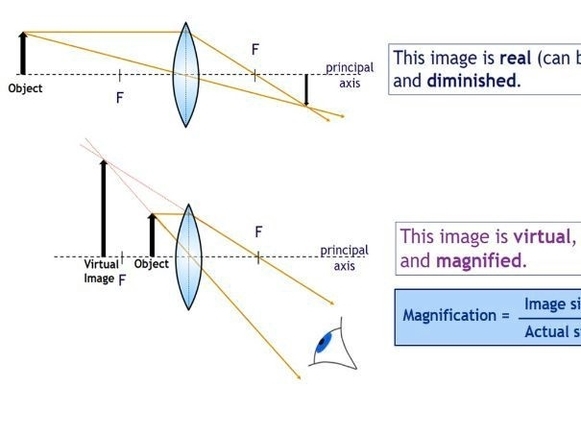
A real image is an image that is formed when light rays from an object converge at a point after reflecting from a mirror. A real image can be projected onto a screen or a wall, and it is inverted (upside down) compared to the object. A real image is formed by concave mirrors when the object is placed beyond the focal point of the mirror. A real image is also formed by convex lenses when the object is placed beyond the focal point of the lens.
A virtual image is an image that is formed when light rays from an object appear to diverge from a point behind the mirror. A virtual image cannot be projected onto a screen or a wall, and it is upright (right side up) compared to the object. A virtual image is formed by plane mirrors, convex mirrors, and concave mirrors when the object is placed between the focal point and the mirror. A virtual image is also formed by concave lenses and convex lenses when the object is placed within the focal point of the lens.
The difference between real and virtual images can be understood by using ray diagrams, which show the path of light rays from the object to the image. For example, the following ray diagram shows how a real image is formed by a concave mirror:
The following ray diagram shows how a virtual image is formed by a convex mirror:
The main characteristics of real and virtual images are summarized below.
